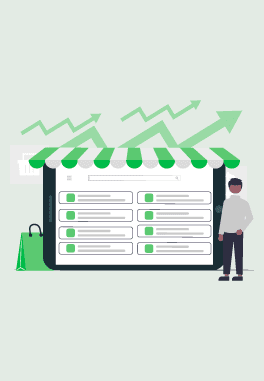Sales tax is a part of every online seller’s business. And in the U.S., this can be particularly tricky. This guide will walk you through the five key aspects of every eCommerce sellers faces, and ensure you’re up to the challenge of handling them.
Know Which Customers to Charge
In the U.S., online sellers and other retailers are required to charge to buyers in states where they have sales tax nexus. This nexus is just a fancy legalese way to say “significant connection” to a state. If you have nexus in a state, then that state considers you on the hook. You’ll always have this nexus in your home state, but you may find that certain business activities create nexus in other states, too. They include:
- A location – an office, warehouse, store, or other physical place of business
- Personnel – an employee, contractor, salesperson, installer or other person doing work for your business
- Inventory – Most states consider storing inventory in the state to cause nexus even if you have no other place of business or personnel
- Affiliates – Someone who advertises your products in exchange for a cut of the profits creates nexus in many states
- A drop shipping relationship – If you have a 3rd party ship to your buyers, you may create nexus
- Selling products at a tradeshow or other event – Some states consider you to have nexus even if you only sell there temporarily
To help you determine whether or not your business activities give you find out what every U.S. state’s laws have to say about nexus here
Register for a Permit
Every U.S. states require you to register for a permit before you charge to buyers in that state. You can find directions for registering for a sales tax permit in each here. Don’t skip this step! States consider it unlawful to collect tax in their name without first registering for a permit. When you receive your permit, you’ll also be assigned a filing frequency. This is usually monthly, quarterly or annual. As a general rule, the higher your sales volume in a state, the more frequently you’ll file a return in that state.
Collect Sales Tax
Once you have your permit, it’s time to ensure that you are collecting from your customers. If you sell on Amazon FBA, you’re in luck. They have a very robust collection engine, and all you have to do is tell them where to collect. If you sell on other shopping carts (like Shopify) or marketplaces (like eBay), be sure you’re collecting from your buyers there, too.
Report How Much Tax You’ve Collected
When your filing due date rolls around, it’s time to report how much tax you’ve collected through all of your sales channels and file your tax returns. Unfortunately, most states don’t make it simple to report how much tax you’ve collected. They don’t only want to see how much you collected from buyers in the state. They want you to break that amount down by the county, city and other special taxing districts where your buyer lived. When states have hundreds of taxing jurisdictions, this job can get difficult quickly. That’s where automation comes in. With an automation solution, you can connect all the shopping carts and marketplaces on which you sell. You’ll be presented with a return-ready report which you can use to file your return at your state’s website. Or, if you never want to look at another filing again, you can AutoFile your returns in most states!
File Your Returns
Now that you’ve reported how much tax you collected, its times to file your return. If you don’t opt to use a service like AutoFile, you can file online at your state’s department of revenue website. There are a couple of important things to remember when filing your returns:
- File zero returns – Always file a return even if you didn’t collect any tax. Most states require you to file even if you don’t owe a penny, and may even assess a penalty for not filing!
- Take advantage of discounts – About half the states allow online sellers to keep a small (usually 1-2%) portion of the tax you’ve collected if you file on time. Don’t pass up this free money!
I hope this guide has helped you feel confident about sales tax as an online seller.
e-commerce finances


Leave a Reply